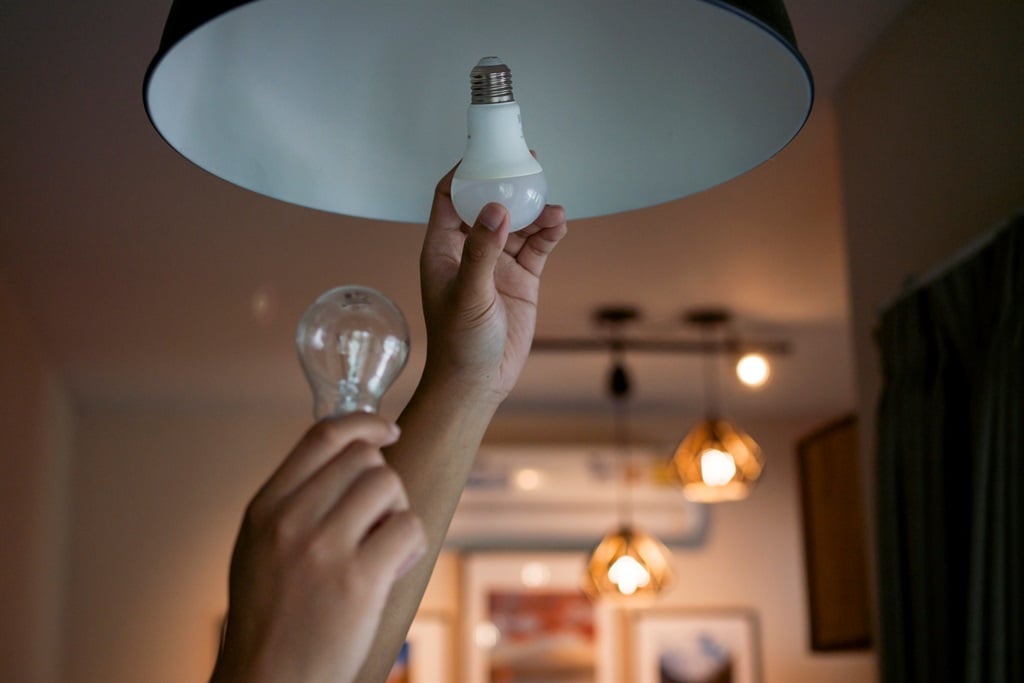The sale of inefficient lightbulbs has been banned. This is how much consumers who haven’t made the switch yet could save. (Thana Prasongsin/Getty Images)
- A new lighting efficiency standard came into effect on Thursday.
- Consumers who have been using inefficient bulbs stand to save a substantial amount of money by switching.
- A News24 calculation shows that consumers could save more than R4 000 in 10 years by swapping bulbs.
- For more financial news, go to the News24 Business front page.
New lighting efficiency standards that came into effect in SA on 23 May in will save some consumers a substantial amount of money in the long run, as it will no longer be possible to buy power-hungry lightbulbs.
Starting on Thursday, the sale of incandescent and compact fluorescent lightbulbs (CFL) will start to be phased out for general household use, essentially mandating the use of light-emitting diodes (LEDs) going forward.
On 24 May last year, the Department of Trade, Industry and Competition (dtic) published a notice in the Government Gazette setting a new standard for lightbulb energy efficiency. The new rules are being introduced in phases, with the first phase starting today.
READ | SA ban on inefficient, power-heavy lightbulbs kicks in next week
Light bulbs will now need to produce a minimum of 90 lumens (lm) of light per watt (W) of power it is rated to use.
The efficiency of lightbulbs is measured in lm/W, indicating the number of units of light produced per unit of power. The higher the lm/W figure, the better the lightbulb is at producing light without using much energy.
The Government Gazette did not say incandescent and fluorescent bulbs would be banned per se, but it set a new efficiency standard that those bulbs do not meet under normal circumstances.
In two years’ time, the efficiency rating will be raised to a minimum of 105 lm/W.
Based on the ratings in an Eskom lighting brochure, incandescent and CFL lights are too inefficient to meet the new standards.
Incandescent lights typically have an lm/W rating of between six and 24, and CFL lightbulbs have a rating of between 40 and 80 lm/W – both too low to meet the new standard.
LEDs, on the other hand, typically have an efficiency rating of between 90 and 150 lm/W, which meets the new standard.
LEDs, which create light when current passes through a microchip, have been on the market in South Africa for decades, but have historically had a slightly higher initial purchase price when compared to less energy-efficient alternatives.
It is not clear how market share is currently divided between the different light bulb types in South Africa, but moving to LEDs will save those consumers who were using incandescent and fluorescent lightbulbs money in the long run.
A Eurolux document on the regulation change explained that noncompliant lights with an existing sales permit can still be sold until 31 December 2024, but no new permits will be issued.
Comparison
News24 compared the total cost of using the three bulb types over a 10-year period, given the amount of electricity the bulbs use and the lifespan of the different bulbs.
The comparison required a number of assumptions to illustrate the point:
- It was assumed that the lights were used for an average of four hours a day over 10 years.
- The prices and power ratings for the different bulbs were taken from current listings either on LightStore or Takealot.
- The expected lumens of the bulbs were not identical, varying between 810 lm and 1 152 lm.
- The LED light considered was dimmable, and the other bulbs were not.
Here is how the specifications of the bulbs compared:
Comparison
Incandescent
Price: R48
Watt rating: 100W
Expected to last: 1 000 hours
Brightness: 1 152 lm
CFL
Price: R93
Watt rating: 13W
Expected to last: 8 000 hours
Brightness: 850 lm
LED
Price: R60
Watt rating: 9W
Expected to last: 25 000 hours
Brightness: 810 lm
Given these assumptions and these specifications, here is the expected cost of using the bulbs for 10 years:
Total price
Incandescent
Cost of bulbs: R480
Cost of electricity: R4 380
Total: R4 860
CFL
Cost of bulbs: R186
Cost of electricity: R569
Total: R755
LED
Cost of bulbs: R60
Cost of electricity: R394
Total: R454
Therefore, consumers can expect to save more than R4 000 over 10 years for every incandescent lightbulb that is replaced with a similar LED bulb.
